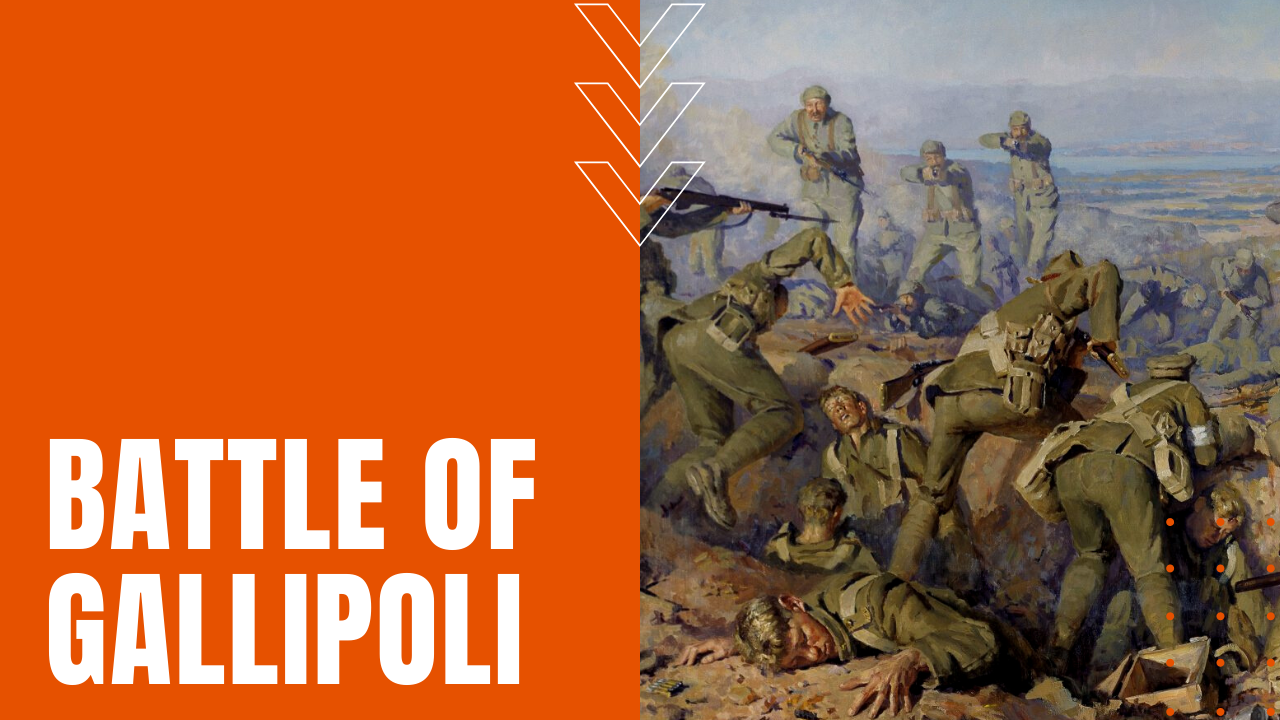Battle of Gallipoli

With the First World War bogged down on the Western Front by 1915, First Lord of the Admiralty, Winston Churchill, proposed an attack on the Ottoman Turks, who had sided with Germany and the Central Powers early on in the war.
Churchill’s Dardanelles Campaign Plan
Churchill’s plan was to seize the Dardanelles Straits on the Gallipoli Peninsula of Turkey, which was a narrow passage connecting the Aegean Sea to the Sea of Marmara in northwestern Turkey. If successful, the invasion would allow the Allies to unite with the faltering Russians in the Black Sea, working in tandem to knock Turkey out of the war.
Beginning on February 19th with a long-range naval assault on the Dardanelles, 1915, Turkish forces abandoned their forward positions, while maintaining heavy fire on Allied minesweepers, stalling the Allied advance until March 18th, when 18 Allied battleships entered the straits against heavy defensive fire.
Three Allied ships were sunk in the engagement, while another three warships would suffer debilitating damage. After the Allied navy’s indisputable defeat, British War Secretary Lord Kitchener appointed General Ian Hamilton to spearhead a land invasion, prompting the general to amass British, Australian, French and New Zealand troops on the Greek island of Lemnos.
Gallipoli Campaign
The Allied invasion of the Gallipoli Peninsula began on April 25th, 1915, and despite suffering heavy casualties, the Allies managed to establish a beachhead at Helles on the southern tip of the peninsula, and a second at Gaba Tepe on the Aegean Coast, the later renamed Anzac Cove, in honor of Australian and New Zealand troops who suffered egregious losses against determined Turkish defenders.
The Turks soon called in reinforcements from the Palestine and Caucasus fronts, setting in motion a three-and-a-half-month bloody standoff that saw heavy casualties on both sides. In an attempt to end the stalemate, on August 6th, 1915, the Allies landed troops at Suvla Bay, which they combined with a northern advance from Anzac Cove toward Sari Bair, along with a diversionary ploy at Helles.
Who Won the Battle of Gallipoli?
Indecision and delay on the part of the Allies stalled forward progress in all three fronts, and after Turkish reinforcements continued to flow into the region, the Allies began a December evacuation of 105,000 pinned down troops, marking a stunning victory on behalf of the Ottoman Empire. In the end, some 480,000 Allied troops fought in the nearly eleven-month Gallipoli Campaign, witnessing 250,000 casualties, including 46,000 deaths. Turkey suffered a matching casualty count, with some 65,000 killed in action, making the Battle of Gallipoli, one of the bloodiest campaigns of the First World War.
